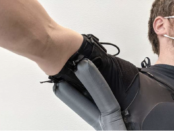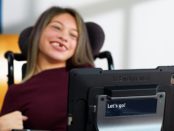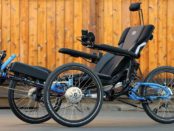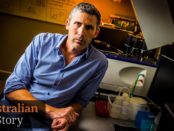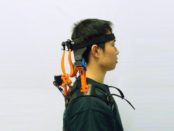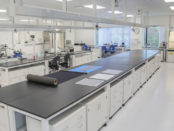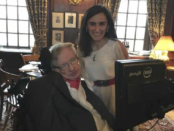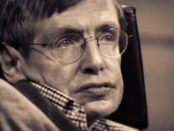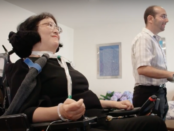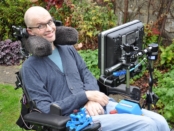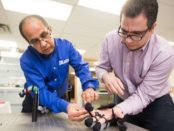ALS
Amyotrophic lateral sclerosis, also known as motor neurone disease (MND) or Lou Gehrig’s disease, is a neurodegenerative neuromuscular disease
Proof-of-concept device is comfortable, safe, easy to use. This soft robotic wearable is capable of significantly assisting upper arm and shoulder movement in people with ALS. Photo credit: Walsh Lab, Harvard SEAS By Kat J. McAlpine,
… READ MORETD Pilot is an eye-controlled communication device for iPad. Designed to empower people with conditions such as ALS/MND, spinal cord injury or cerebral palsy to communicate and use their favourite apps, this iPadOS-based speech
… READ MOREEngineering couldn’t cure a devastating illness, but it could still help someone cope with it. We were spending a week on California’s Pacific Crest Trail, traversing a part of the Sierras north and west of Lake Tahoe. The terrain
… READ MOREAcademic institutions need to do much more to support faculty members with disabilities and to create an environment in which they can thrive, argues a commentary published May 18 in the journal Trends in Neurosciences. Breaking
… READ MOREComfortable brace incorporates both sensors and actuators to restore roughly 70% of the active range of motion. A study participant wearing the neck brace. Photo and Video credit: Haohan Zhang and Sunil K. Agrawal, Columbia
… READ MOREGore is recruiting startups to Silicon Valley to make wearables or flexible electronics from the same material used in Gore-Tex. Gore Innovation Center By Tekla S. Perry, IEEE Spectrum 13 July 2018 I confess, I wasn’t familiar with
… READ MOREWhen Lama Nachman met Stephen Hawking in 2011, she was given one clear instruction: do not change his voice. Lama Nachman, right, worked with Stephen Hawking on upgrading the systems he used to communicate. The hardware for his voice
… READ MOREOne of Hawking’s greatest legacies is the work he did on technologies to assist people with disabilities. “It just seemed that cosmology was more exciting, because it really did seem to involve the big question: Where did the
… READ MOREGrowing up disabled, I had few role models. But this brilliant, witty scientist helped shift the negative stereotypes many face. “It just seemed that cosmology was more exciting, because it really did seem to involve the big
… READ MORECliff Barr has no illusions about how his life is going to end but he still has hope. ALS patient Cliff Barr, left, who is taking part in a new Canada-wide clinical trial to treat ALS, poses in an examination room with tria leader Dr.
… READ MOREStanford University School of Medicine Clinical research led by Stanford University investigators has demonstrated that a brain-to-computer hookup can enable people with paralysis to type via direct brain control at the highest speeds
… READ MOREGazeSpeak runs on a smartphone and uses artificial intelligence to convert eye movements into speech, so a conversation partner can understand what is being said in real time. The eyes say it all. GazeSpeak, Enable Team, Microsoft
… READ MORESteve Saling, an architect and engineer with ALS, helped design features of the Leonard Florence Center, Dapper McDonald ALS Residence, intended to preserve the independence of those with ALS, where he is a resident. Josh Reynolds for
… READ MOREPatrick Joyce, who suffers from motor neuron disease (MND), has received a $196,000 prize from Hackaday after inventing a unique 3D printed mobility device. The Eyedrivomatic technology, developed in collaboration with Steve Evans and
… READ MOREInitial rehabilitation therapy for many stroke victims may focus on regaining the ability to walk. But when hands also are affected, therapy focused only on the legs can leave hand muscles contracted, a condition that can be difficult
… READ MORE
